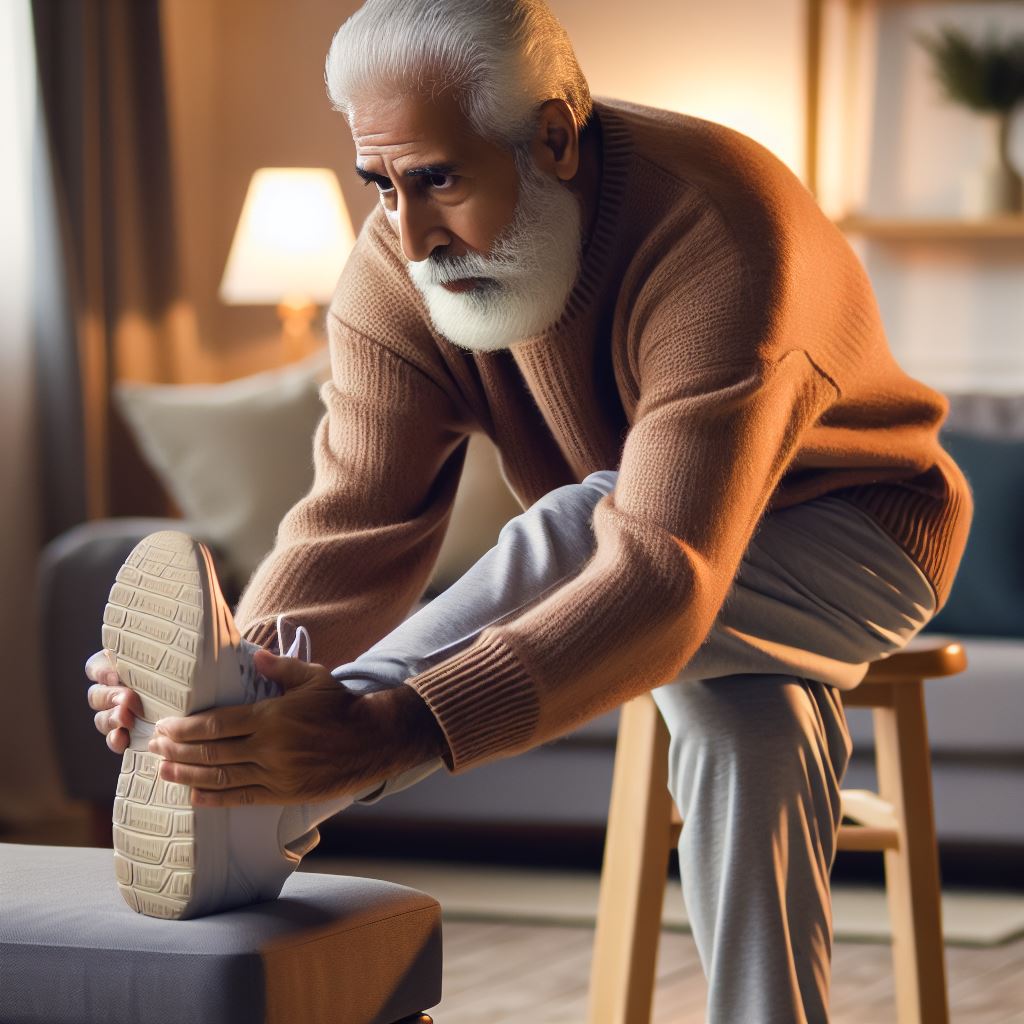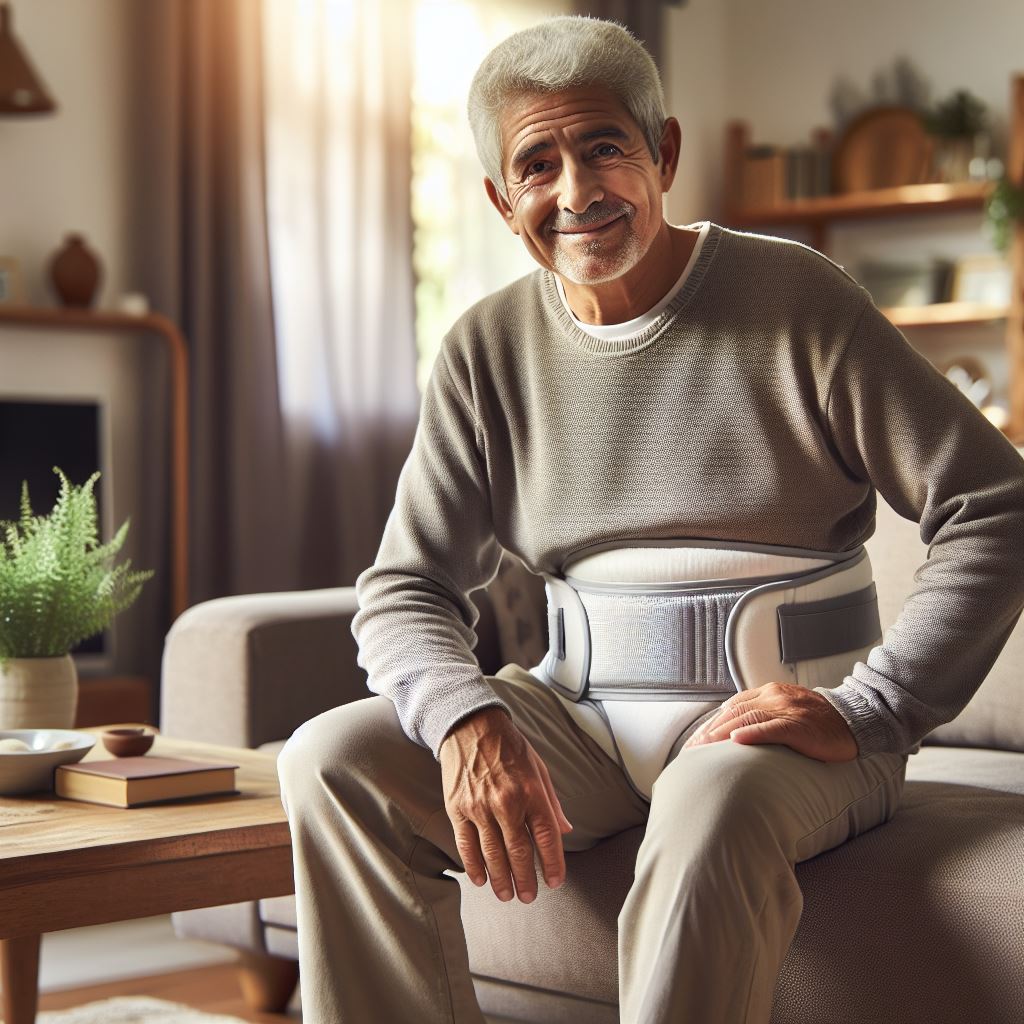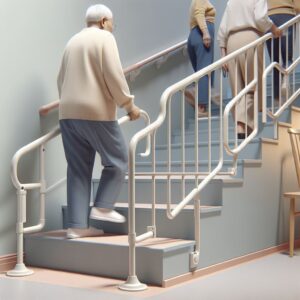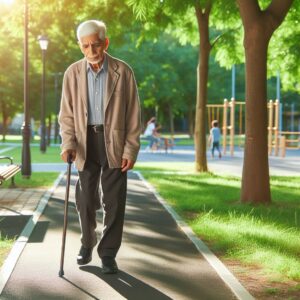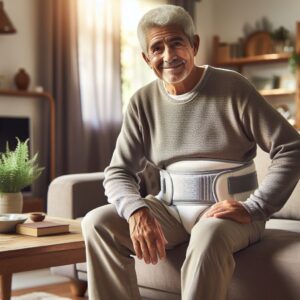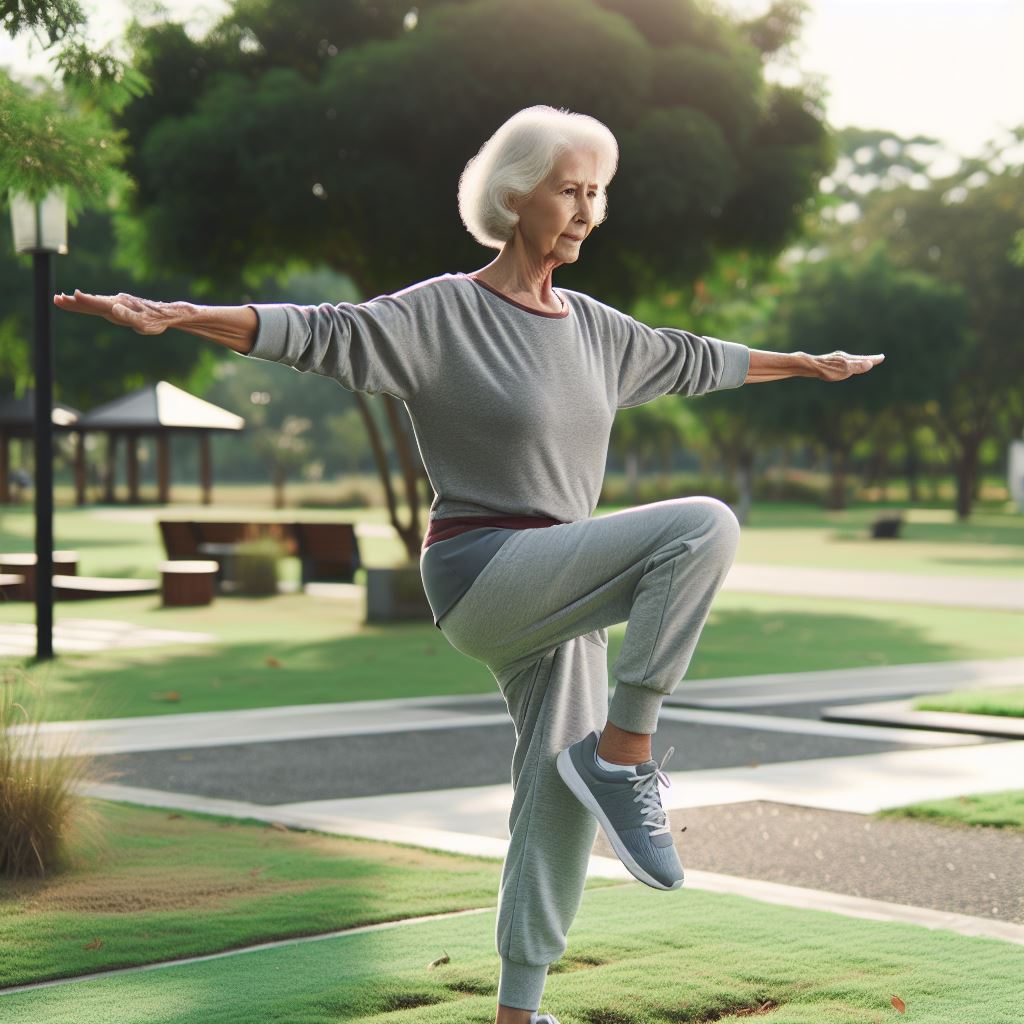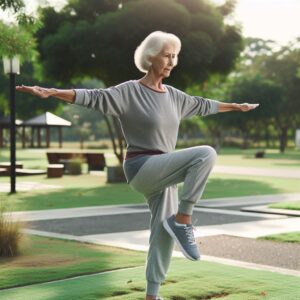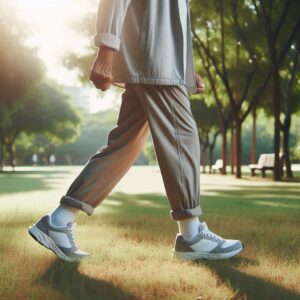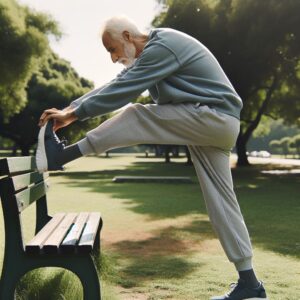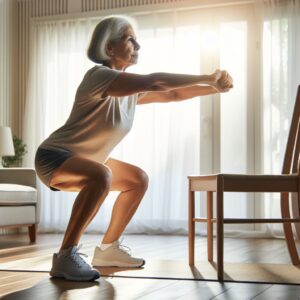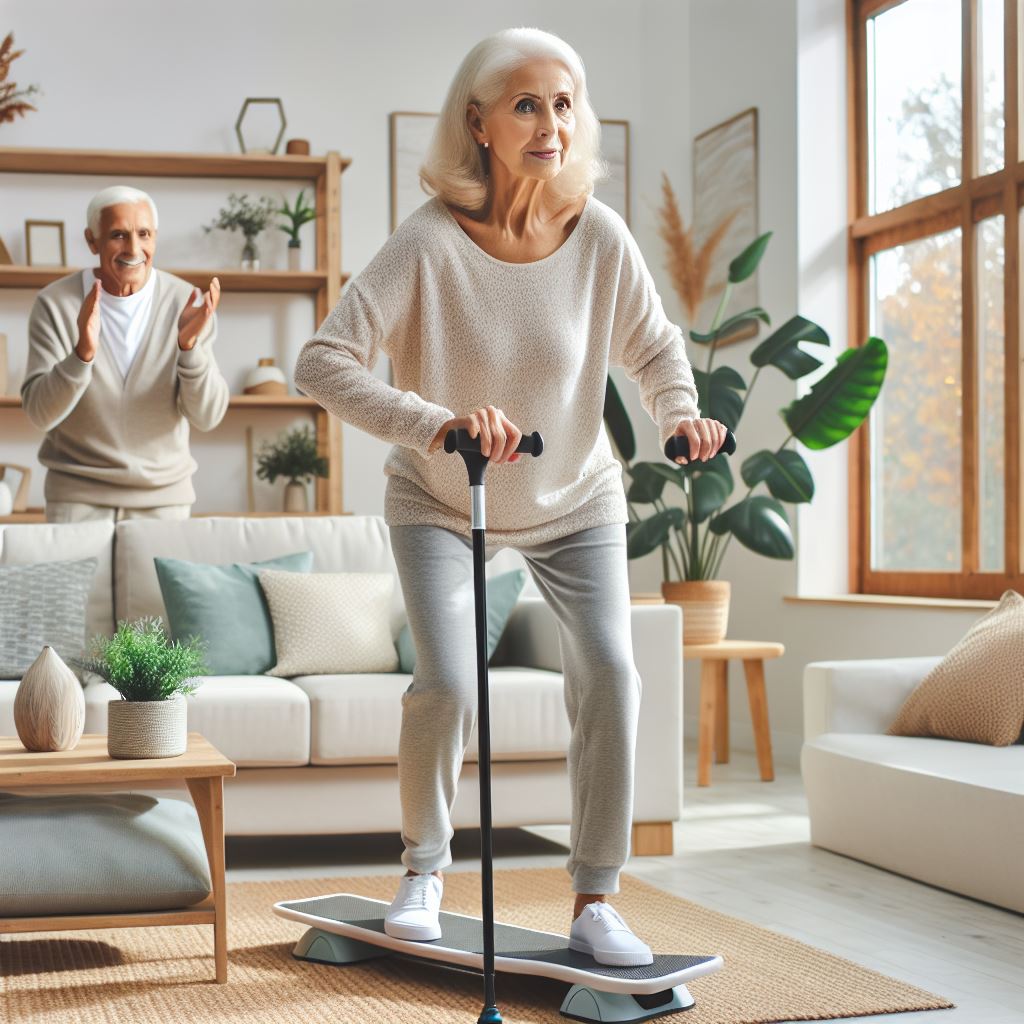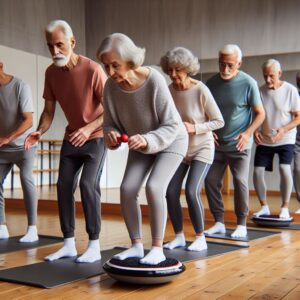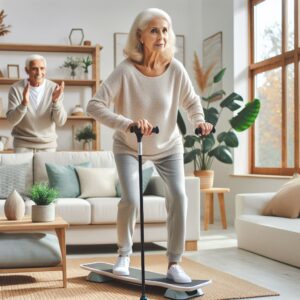Falls are a major health concern for seniors, often leading to serious injuries, reduced mobility, and a loss of independence. One of the most effective ways to prevent falls is by strengthening the hip muscles, which play a crucial role in stability and balance.
Seated hip exercises for seniors provide a safe and accessible way to improve strength, flexibility, and coordination without the risk of standing exercises. This guide explores various seated hip exercises, their benefits, and tips for incorporating them into a daily routine.
Why Seated Hip Exercises Are Important for Seniors
The Role of the Hips in Balance and Stability
The hip muscles, including the gluteus maximus, medius, and minimus, are responsible for maintaining posture, supporting movement, and ensuring balance. Weak hips can contribute to instability, making seniors more susceptible to falls. By engaging in seated hip exercises for seniors, individuals can strengthen these essential muscles while minimizing the risk of strain or injury.
The gluteus maximus is the largest muscle in the body and plays a key role in extending and rotating the hip. The gluteus medius and minimus are smaller muscles located on the side of the hip, responsible for abducting the leg and stabilizing the pelvis during walking and other activities. Strengthening these muscles helps improve overall balance and stability, reducing the likelihood of falls.
Fall Prevention Through Strength and Flexibility
As seniors age, muscle mass naturally declines, which can result in reduced strength and mobility. Regular seated hip exercises help counteract this process by maintaining flexibility, improving coordination, and enhancing endurance. Strengthened hip muscles allow for better support during everyday movements, such as walking, standing up from a chair, and shifting weight from one foot to another.
Flexibility is crucial for maintaining a full range of motion in the hips, which is essential for performing daily activities with ease. Seated hip exercises can help improve flexibility by gently stretching the muscles and connective tissues around the hip joint. This can lead to increased mobility and a reduced risk of injury.
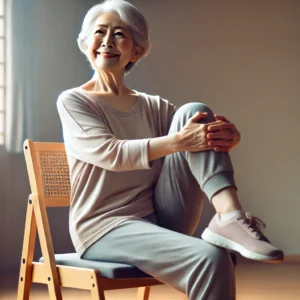
Benefits of Seated Hip Exercises
- Reduced Risk of Falls: Stronger hip muscles improve overall stability, making it easier to maintain balance and prevent falls.
- Enhanced Mobility: Greater flexibility makes movement smoother and easier, allowing seniors to perform daily activities with less effort.
- Lower Impact on Joints: Seated exercises minimize strain on knees and ankles, making them suitable for individuals with joint pain or arthritis.
- Increased Blood Circulation: Regular movement prevents stiffness and enhances circulation, promoting overall health and well-being.
- Improved Posture: Strengthening the hips supports better spinal alignment, reducing the risk of back pain and improving overall posture.
- Increased Independence: Seniors who maintain mobility can continue daily activities without assistance, leading to a higher quality of life.
- Pain Reduction: Strengthening muscles around the hips can alleviate discomfort from arthritis or previous injuries, improving overall comfort and function.
Essential Seated Hip Exercises for Seniors
1. Seated Marching
This simple exercise strengthens hip flexors and improves coordination.
How to Do It:
- Sit up straight in a sturdy chair with your feet flat on the floor.
- Lift one knee towards your chest while keeping your back straight.
- Lower your foot and repeat with the other leg.
- Perform 10-15 repetitions per leg.
Tips:
- Move slowly to maintain control.
- Keep your core engaged.
- Try holding onto the sides of the chair for extra support.
Seated marching is an excellent way to warm up the hip muscles and prepare them for more challenging exercises. It also helps improve coordination and balance, making it easier to perform other seated hip exercises.
2. Seated Hip Abduction (Leg Side Raises)
This exercise strengthens the outer hip muscles, enhancing lateral stability.
How to Do It:
- Sit upright in a chair with feet flat.
- Lift one leg outward to the side, keeping it straight.
- Hold for a second, then bring it back.
- Perform 10-15 reps per leg.
Modifications:
- Use resistance bands around the thighs for added challenge.
- Hold onto the chair for stability if needed.
Seated hip abduction targets the gluteus medius and minimus, which are essential for maintaining balance and stability during lateral movements. This exercise can help improve overall hip strength and reduce the risk of falls.
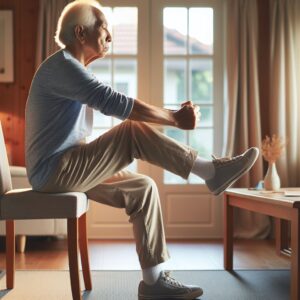
3. Seated Knee Extensions
This helps with quadriceps and hip flexibility.
How to Do It:
- Sit straight with both feet on the ground.
- Extend one leg straight out and hold for 3-5 seconds.
- Lower it back down slowly.
- Repeat for 10-15 reps per leg.
Additional Tip:
- Try squeezing your thigh muscles while holding the position to maximize effectiveness.
Seated knee extensions are an effective way to strengthen the quadriceps, which play a crucial role in supporting the hips and knees. This exercise can help improve overall leg strength and flexibility, making it easier to perform daily activities.
4. Seated Hip Circles
Improves hip mobility and reduces stiffness.
How to Do It:
- Sit with feet flat and hands on your thighs.
- Make small circular motions with one knee.
- Reverse the direction after 10 reps.
- Repeat with the other leg.
Variations:
- Make larger circles for an extra stretch.
- Perform in both clockwise and counterclockwise directions.
Seated hip circles are a gentle way to improve hip mobility and reduce stiffness. This exercise can help increase the range of motion in the hip joint, making it easier to perform other seated hip exercises and daily activities.
5. Seated Leg Cross Stretch
Enhances flexibility in the hip and lower back.
How to Do It:
- Sit up straight and cross one ankle over the opposite knee.
- Gently press down on the raised knee.
- Hold for 15-20 seconds, then switch legs.
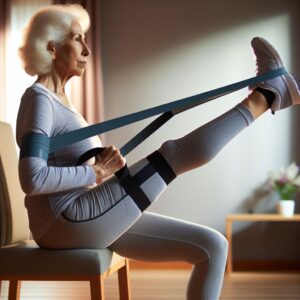
Tip:
- Breathe deeply to deepen the stretch.
The seated leg cross stretch is an excellent way to improve flexibility in the hip and lower back. This exercise can help alleviate tension and discomfort in these areas, making it easier to perform other seated hip exercises and daily activities.
6. Seated Heel Slides
Encourages hip mobility and coordination.
How to Do It:
- Sit in a chair with both feet flat on the floor.
- Slowly slide one foot forward, straightening the leg.
- Slide it back to the starting position.
- Repeat 10-15 times per leg.
Modification:
- Use a small towel under your foot to make sliding easier.
Seated heel slides are a gentle way to improve hip mobility and coordination. This exercise can help increase the range of motion in the hip joint, making it easier to perform other seated hip exercises and daily activities.
Incorporating Seated Hip Exercises into a Routine
Creating a Consistent Exercise Schedule
Seniors should aim for at least 3-5 days a week of seated hip exercises to see benefits. Starting with 10-15 minutes per session and gradually increasing duration helps build endurance without strain.
Consistency is key when it comes to seeing the benefits of seated hip exercises. By incorporating these exercises into a regular routine, seniors can improve their overall strength, flexibility, and balance, reducing the risk of falls and maintaining their independence.
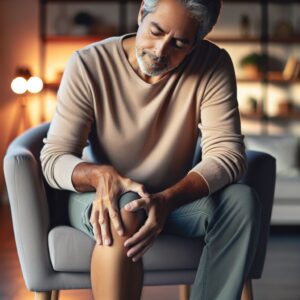
Combining with Other Activities
Pairing seated hip exercises with gentle stretching, chair yoga, or light resistance training enhances overall effectiveness. Activities like seated Tai Chi can also complement hip strengthening.
Combining seated hip exercises with other forms of physical activity can help improve overall fitness and well-being. Gentle stretching and chair yoga can help improve flexibility and reduce tension, while light resistance training can help build strength and endurance. Seated Tai Chi is another excellent option, as it combines gentle movements with deep breathing and relaxation techniques.
Adapting Exercises for Different Fitness Levels
- Beginners: Start with fewer repetitions and slow movements.
- Intermediate: Increase reps and add light ankle weights.
- Advanced: Combine multiple exercises into a longer routine.
Seated hip exercises can be adapted to suit different fitness levels, making them accessible to a wide range of individuals. Beginners can start with fewer repetitions and slower movements, while more advanced individuals can increase the intensity by adding light ankle weights or combining multiple exercises into a longer routine.
Safety Tips for Seated Hip Exercises
Proper Posture and Support
- Sit in a sturdy chair with a straight back.
- Keep feet flat on the floor for stability.
- Engage core muscles to support movement.
Maintaining proper posture and support is essential for performing seated hip exercises safely and effectively. Sitting in a sturdy chair with a straight back helps ensure stability, while keeping the feet flat on the floor provides a solid base for movement. Engaging the core muscles can help support the spine and reduce the risk of injury.
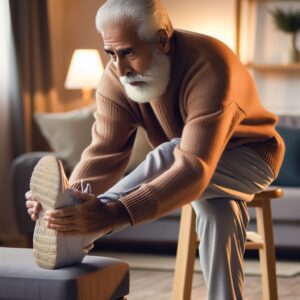
Avoiding Overexertion
- Start slowly and increase intensity gradually.
- Stop if experiencing pain or discomfort.
- Drink water and stay hydrated during exercise.
It’s important to avoid overexertion when performing seated hip exercises. Starting slowly and gradually increasing the intensity can help prevent strain and injury. If pain or discomfort occurs, it’s important to stop and rest. Staying hydrated by drinking water during exercise can also help maintain overall health and well-being.
Using Assistive Equipment
- Resistance bands can add light resistance.
- Cushioned seats or lumbar support can improve comfort.
- Using an exercise ball can provide added core engagement.
Assistive equipment can enhance the effectiveness of seated hip exercises and make them more comfortable. Resistance bands can add light resistance.
Conclusion
Seated hip exercises for seniors are an effective and safe way to improve strength, flexibility, and stability, reducing the risk of falls. By incorporating these exercises into a daily routine, seniors can enhance their mobility and confidence while maintaining independence. Prioritizing hip health through seated exercises is a proactive step towards a safer and more active lifestyle. Staying committed to a regular exercise routine and making small adjustments over time will help seniors continue to enjoy a higher quality of life with improved balance and mobility.
